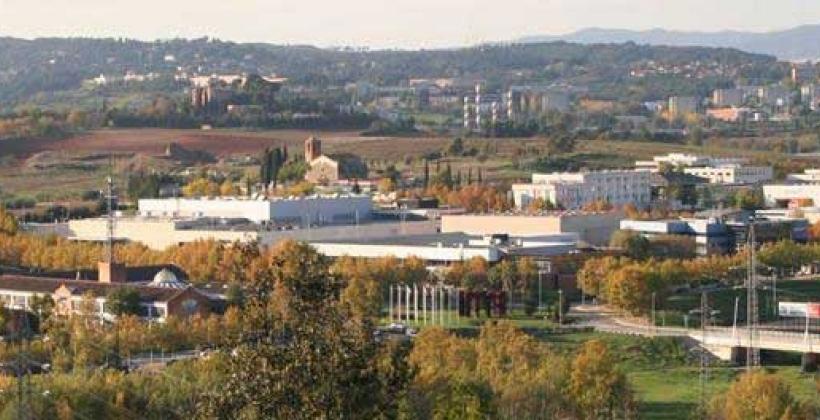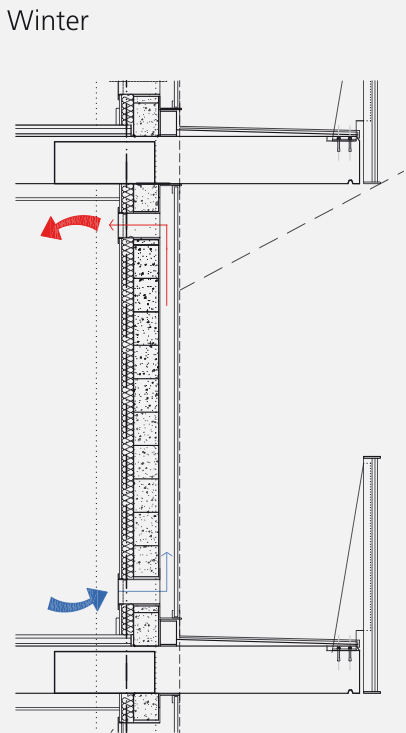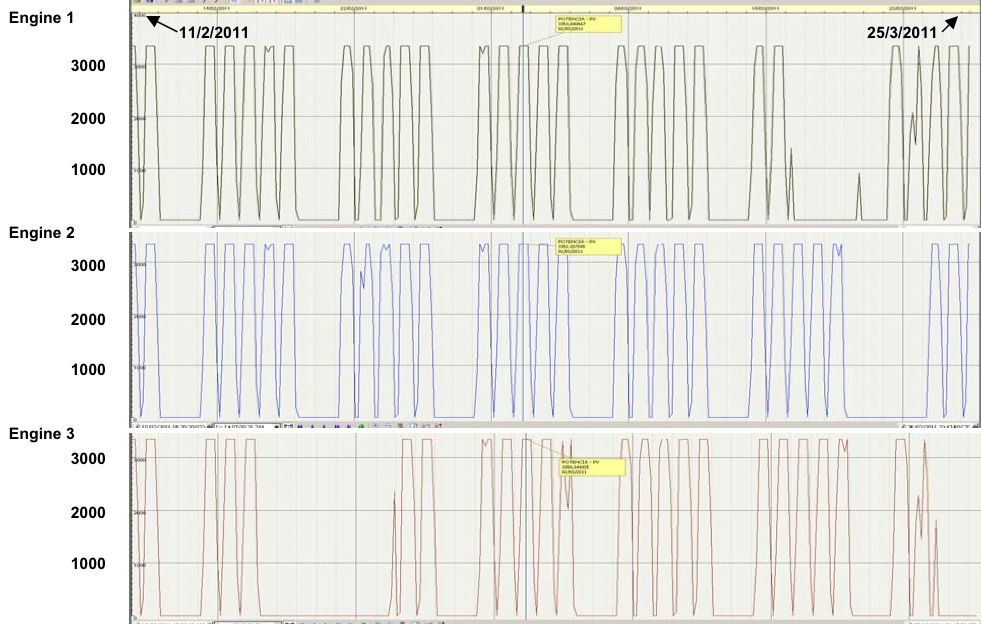
Location
Description
Cerdanyola del Vallès is a city located in the outskirts of Barcelona with an area of 32,000 m² for 57,830 inhabitants. Approximately 30% of the surface consist of a protected area named “Parc de Collserola”. It is of high ecological value and should therefore be classified as a protected area soon.
The demonstration actions focus on a new urban development to be built on 340 ha ground with industrial, commercial and residential areas. Approximately 73% of this is a green corridor, whereas the other 27% is distributed among residential (21%), industrial (59%), and public equipment (20%).
The residential area contains 430,000 m² constructed surface area for an initial prevision of 10,000 inhabitants, with 1200 publicly subsidised buildings and 2100 private buildings. The industrial area covers 1,459,000 m² constructed surface area, named Parc de la Ciencia i la Tecnologia (Science & Technology Park).
In order to link the new urban development with the rest of the city, there will be some demonstration buildings beyond the limits of the Directional Centre. Thus, the project will include an office building and a residential building in the old part of Cerdanyola and an office building and a residential building in the Directional Centre.
Technologies
Technologymix
The project developer Consorci Urbanistic (ConsCd) was responsible to develop 340 ha of ground for a new community of 50,000 inhabitants. A science and technology center on site now is supplied with a highly efficient heat, cold and electricity network powered by gas tri-generation units. A wood gasification plant and a solar thermal cooling system have been designed and will be constructed in a new power plant building (after the CONCERTO period). The heating and cooling network for the first development area is finished and operational.
The “Alba Synchrotron Office Building” with 4,054 m² gross floor area (Picture 1) is part of the science and technology park and has implemented several efficiency measures like curtain wall and roof with very low transfer coefficients and a building management system (BMS) to ensure comfort and proper operation of the services. The BMS additionally allows detailed monitoring of the building.
The „ST-4“ tri-generation plant started operation in July 2010 and was then opened officially. ST-4 includes energy efficiency measures in poly-generation systems, amongst them a district heating and cooling network and an underground chilled water storage tank of 3,750 m³, which acts as a buffer to meet higher cooling demands during peak loads. Also single and double effect thermal absorption chillers are operated from the engine and exhaust gas heat supply. Thermal energy supply to the Synchrotron started in September, after the start-up of the plant’s absorption chillers. The engineering design of “ST-2” with wood gasification and solar thermal energy use continued. The planning foresees to end the implementation and start supplying energy in mid June 2013.
Two residential buildings have been built within CONCERTO: “La Clota” with 53 apartments and “Cordova Street” with 24 apartments. “La Clota” (Picture 2) has a total floor area of 2,786 m² and the dwelling size ranges between 40 and 43 m². The dwellings have been designed with an intermediate space that contains devices to create and regulate natural ventilation in in summer. At „Cordova Street“ (2,172 m²) all the residences have Trombe wall modules (Diagram 1) in the southern façade for preheating in winter and ventilation in summer. Additionally to windows on two opposite facades each apartment has access to a chimney with a manual opening for natural ventilation purposes. By this the building operates without any active cooling devices even during hot summers.

Diagram 1 – Use of Trombe Wall in Winter at Cordova Street
Poly-generation Plant „ST-4“
A energy supply plant with three gas driven cogeneration engines coupled to thermal (absorption) chillers is now operational in Cerdanyola (Picture 1 + 2). The „Synchrotron Office Building“ is the first major customer.
Since July 2010, the first poly-generation plant supplies electricity to the grid through a new 225/25 kV electrical substation, and at the same time, has a direct connection to the Synchrotron Light Laboratory to guarantee power supply in the event of a power blackout. The connection of the Synchrotron and ST-4 plant to the electrical grid takes place in the same point as the new substation. Besides, for a higher quality of electricity supply (wave stability), the Synchrotron requires a 220 kV connection, which means that ST-4 and CELLS share a transformer in the substation. This solution is exceptional within the Spanish electrical system and has implied complicated negotiations with the distribution grid owner (ENDESA), the transport grid owner (REE) and the Ministry of Industry.
On the other hand, thermal energy supply to the Synchrotron started in September, after the start-up of the plant’s absorption chillers. Due to the security requirements of the Synchrotron Light Laboratory, dedicated pipelines supply heat and cold only to this facility, regardless of the DH&C network.
The thermal cooling systems at the current stage are one 3 MWcooling single-effect absorption chiller driven by hot water from co-generation (future enlargement: 1 unit of 2 MWcooling) and one 5 MWcooling double-effect absorption chiller powered by cogeneration exhaust gases (future enlargement 1 unit of 3.35 MWcooling).
The cogeneration is run by 3 high efficiency engines of 3.35 MWel each fuelled by natural gas at the current state. There is room at ST-4 for 2 more engines at a future stage. Table 1 shows the technical data of the engines, diagram 1 displays monitoring data, showing that the three engines run at peak load during weekdays.

Table 1 – Technical Data of the three CHP units

Diagram 1 – Monitoring Data of the three CHP engines
Biomass Gasification Plant
In 2008, a feasibility study of the biomass plant was updated by the ESCO. According to the results of this updated feasibility study, it is considered suitable both from a technical and economic perspective to implement a biomass gasification plant that will produce syngas (up to 2,500 m³/h), which will be used to fuel a cogeneration engine, with an electrical output of 1.6 MW. This biomass gasification co-generation plant will be fuelled either by wood waste from discarded furniture (e.g. plywood) or by sub-products from agricultural origin, whose supply seems to be efficient and certain in the long term.
CREVER-URV has continued working in a model of the wood gasification process. This model is able to predict producer gas composition for different biomass types and also for different gasification agents (air, steam.,.). It is being validated using published experimental data.
Lessons learnt
The following information has been gathered as part of the CONCERTO Premium policy research.
Benefits of CONCERTO:
Key benefits:
The experience gained on the polygeneration plant and generally on the project. The successful completion of the Synchrotron-facility carries prestige. The knowledge and experience gained led to participation in a new project ESESH (Saving Energy in Social Housing with ICT).
Barriers encountered:
Legal barriers: There is a law in Spain safeguarding privacy, which affects the availability of energy data. Therefore, residents had to sign an agreement to provide energy data.
Administrative barriers:
Change of local government – the previous government was in favour of biomass energy, not so the new government. The reasons for this are political and have to do with the infighting between two neighbouring municipalities. The previous major was committed to CONCERTO, not so the new mayor. This biomass plant was not built. The project is mostly owned by the public sector and their decision making is too slow – not forward thinking. The worst impacts of the economic crisis could have been missed if the project had been able to move faster.
Economic barriers: Financing could not be obtained for the biomass plant as the expected income was going to be lower than predicted, therefore the bank refused to finance it. As a solution, the budget had to be modified- grants agreed for the biomass plant were shifted to the gas polygeneration plant and the infrastructure. Feed-in tariffs have recently been lowered in Spain, jeopardizing the business plan for renewables and the financial crisis as a whole.
Success factors identified:
Technical Success Factors:
There is an SDI (spatial data infrastructure) system for the whole of Cataluña.
Institutional success factors:
Good relationship between the partners (INCASOL-representing the municipality, the University of Taragona and Consultants) and with POLYCITY-Partners and the EC-Officer. A new way of coordinating stakeholders and of demand side management in social housing was established.
Other:
Combining a prestige project such as the Sychrotron with sustainability objective, therefore creating a particularly high profile sustainability project. The fact that the Sychrotron-project had been part of a strategic plan at highest level, with certain contracts agreed far in advance meant that at least this part of the project went ahead, whilst other parts where jeopardized by the financial crisis.
Business models used:
The shareholder structure for the ESCO is a public-private partnership, where the share distribution reflects the risks initially assumed by the investors. A private investor (Alba
Polygeneration Plant) owns 90% of the polygeneration plant anticipating the connection of very large number of consumers to the district heating and cooling networks. Instead, from 16th November 2010 to 11th May 2011 the polygeneration plant produced hot and chilled water to satisfy the demand of only one consumer (the Synchrotron). The energy demand of the Synchrotron has been low compared to the energy demand estimated in the call for tenders and the installed capacity. As a result, the private investor, financed by a bank, has now difficulties with repayments, due to the much reduced size of the project (hence reduced income).
Legacy – follow-on projects:
With the synchrotron being unique, there are no opportunities for direct replication of this major part of the project. It is hoped that the approach used in the residential buildings
will be replicated as the area is developed in future. A follow-on project on the same site has been secured – the project ESESH (Saving Energy in Social Housing with ICT, it will help to save energy and tests software tools).
Legacy - Policy Developments:
The POLICITY experience has contributed to the inclusion of energy efficiency and climate protections criteria in the development of the Urban Plan of Parc de l’Alba, within the framework of Catalan Sustainable Planning and Building Strategy. Furthermore a new regional ordinance devoted to social housing was adopted providing rent reductions for tenants that use technologies and practices for domestic energy saving.
The CONCERTO approach
The Spanish demonstration project is focused on the Directional Centre, a new urban development with the aim to become a model of sustainable growth. The Directional Centre comprises an area of roughly 3.400.000 m², of which 1.652.000 m² are green spaces. It includes the Science and Technology Park, with a total built area of 1.460.000 m² and with a Synchrotron light laboratory (particle accelerator) as its main landmark.
Highlights
The site includes 4 demonstration buildings: Synchrotron offices, NaturCentre (offices), La Clota building (53 dwellings) and a residential building in the Directional Centre (24 dwellings). In these buildings specific low energy construction measures, including natural ventilation concepts and building envelope optimisation, are being implemented.
A high efficiency energy system has been implemented in the Directional Centre, in order to produce electricity, heat and cold. This polygeneration system will comprise 4 natural gas cogeneration plants with an electrical output of about 47 MWe, with thermal cooling facilities (SE/DE absortion and adsorption chillers) and a district heating and cooling network.
Thematic Field
- New Building(s)
